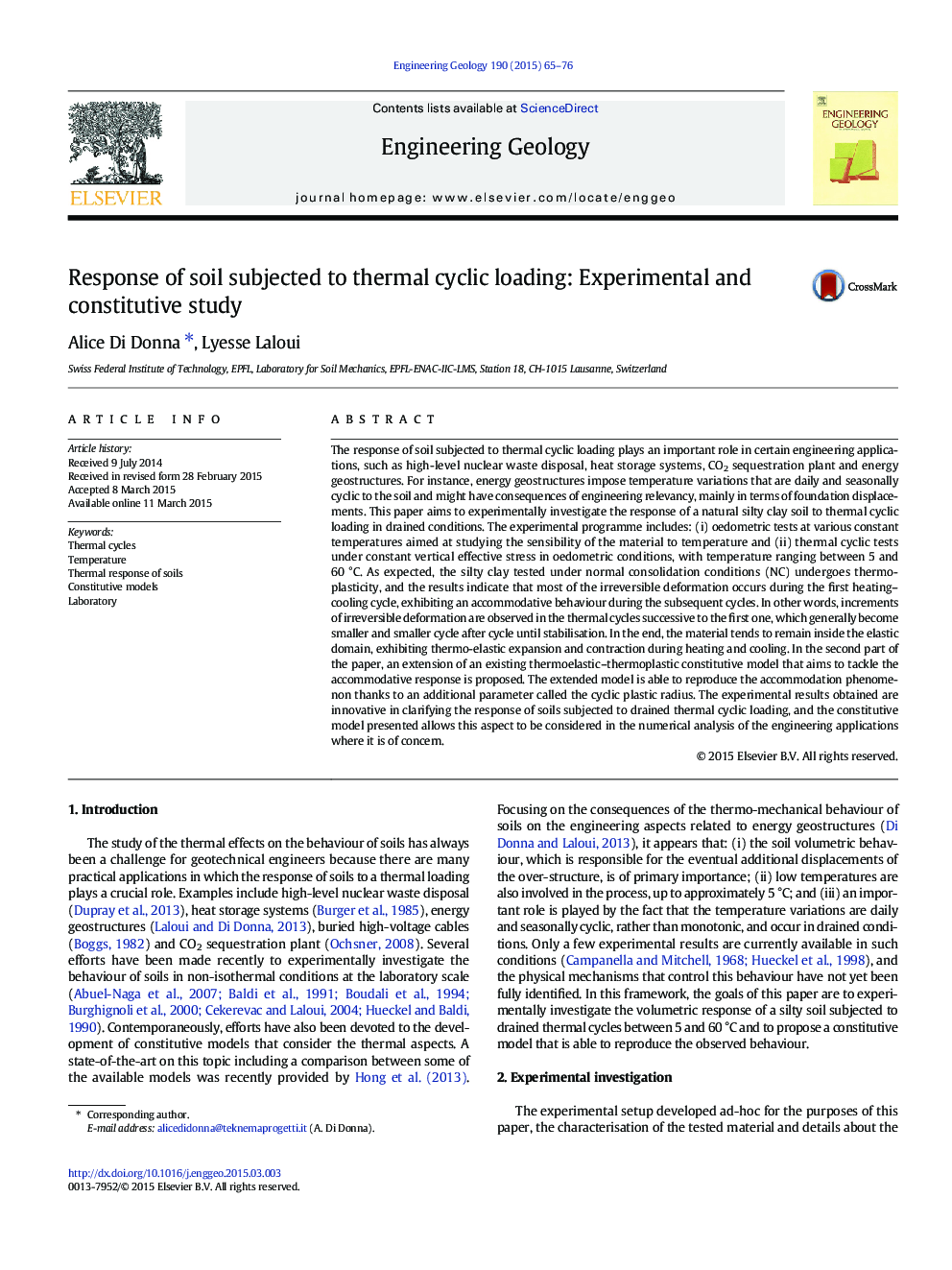| کد مقاله | کد نشریه | سال انتشار | مقاله انگلیسی | نسخه تمام متن |
|---|---|---|---|---|
| 4743413 | 1641795 | 2015 | 12 صفحه PDF | دانلود رایگان |
• Development of an experimental setup for testing the volumetric response of soils under controlled temperature
• Experimental results on the response of a natural soil when subjected to drained heating and cooling cycles
• Enhancement of a constitutive model able to reproduce the thermo-mechanical response of soils when subjected to thermal cycles
The response of soil subjected to thermal cyclic loading plays an important role in certain engineering applications, such as high-level nuclear waste disposal, heat storage systems, CO2 sequestration plant and energy geostructures. For instance, energy geostructures impose temperature variations that are daily and seasonally cyclic to the soil and might have consequences of engineering relevancy, mainly in terms of foundation displacements. This paper aims to experimentally investigate the response of a natural silty clay soil to thermal cyclic loading in drained conditions. The experimental programme includes: (i) oedometric tests at various constant temperatures aimed at studying the sensibility of the material to temperature and (ii) thermal cyclic tests under constant vertical effective stress in oedometric conditions, with temperature ranging between 5 and 60 °C. As expected, the silty clay tested under normal consolidation conditions (NC) undergoes thermo-plasticity, and the results indicate that most of the irreversible deformation occurs during the first heating–cooling cycle, exhibiting an accommodative behaviour during the subsequent cycles. In other words, increments of irreversible deformation are observed in the thermal cycles successive to the first one, which generally become smaller and smaller cycle after cycle until stabilisation. In the end, the material tends to remain inside the elastic domain, exhibiting thermo-elastic expansion and contraction during heating and cooling. In the second part of the paper, an extension of an existing thermoelastic–thermoplastic constitutive model that aims to tackle the accommodative response is proposed. The extended model is able to reproduce the accommodation phenomenon thanks to an additional parameter called the cyclic plastic radius. The experimental results obtained are innovative in clarifying the response of soils subjected to drained thermal cyclic loading, and the constitutive model presented allows this aspect to be considered in the numerical analysis of the engineering applications where it is of concern.
Journal: Engineering Geology - Volume 190, 14 May 2015, Pages 65–76
